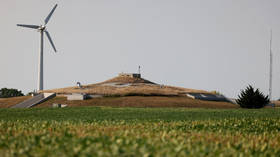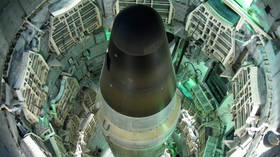US army wants nuke silos shielded from wind turbines – media

Expansion of America’s wind power industry has reportedly raised concerns that the massive turbines dotting the prairies are making it dangerous for US troops to access underground nuclear missile silos during emergencies.
The US Air Force is urging members of Congress to pass legislation requiring two-mile buffer zones around each missile silo, the Associated Press reported on Tuesday. With windmills getting larger and being installed closer each year to the nation’s underground silos – hundreds of which are spread across the US, in such states as Montana, Wyoming and North Dakota – it’s becoming more dangerous for helicopter crews to swoop into missile sites when alarms are triggered.
“When you think about a wind turbine, and even fields of wind turbines, they’ll stretch for miles,” Staff Sergeant Chase Rose, a helicopter flight engineer at Malmstrom Air Force Base in Montana, told the AP. “They’re monstrous, and then you have gigantic blades spinning on them as well. Not only is that a physical obstacle, but those turbines, they create hazards like turbulence as well. That can be really dangerous for us to fly into. So, it’s a very complex situation, when you have to deal with those.”
The US Senate version of the 2024 National Defense Authorization Act includes the proposed silo buffer zones, but previously installed turbines would not be affected, the AP said. The Air Force has estimated that 46 of its 450 underground silos are already “severely” encroached upon, meaning that more than half of the potential helicopter routes to the launch site are obstructed. Some of the current turbines have towers as high as 650 feet (around 200 meters) and rotor diameters spanning 367 feet.
The issue has arisen amid a push by President Joe Biden’s administration to derive 80% of US electricity generation from emissions-free sources by 2030. Renewable energy accounted for just 22% of power output last year. Wind power had a 10.2% share of the pie.
Air Force officials acknowledge that the prioritization of renewable energy and the importance of enabling farmers to profit from turbine leases on their land have put the nation’s nuclear forces in a difficult position, the AP said. The military continues to work with power producers to “ensure the country’s green energy needs are met,” said Major Victoria Hight, a spokeswoman for F.E. Warren Air Force Base in Wyoming. However, she added, “the encroaching turbines limit safe helicopter transit and nuclear security operations.”













